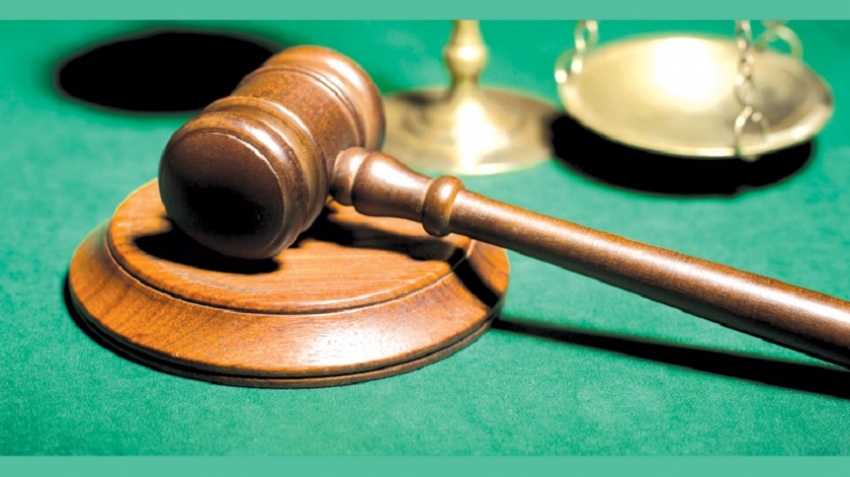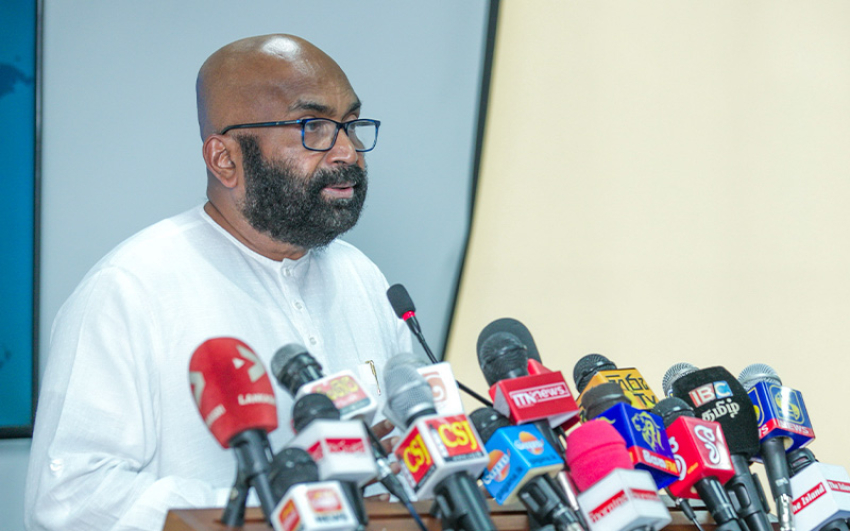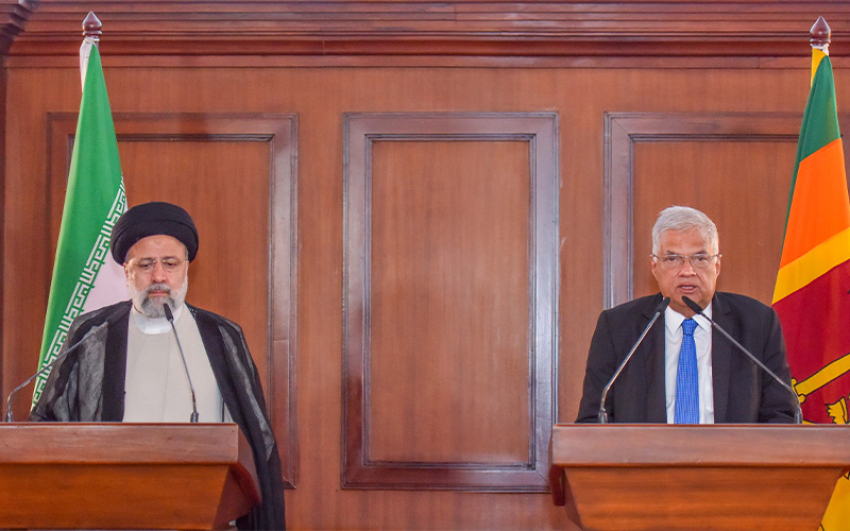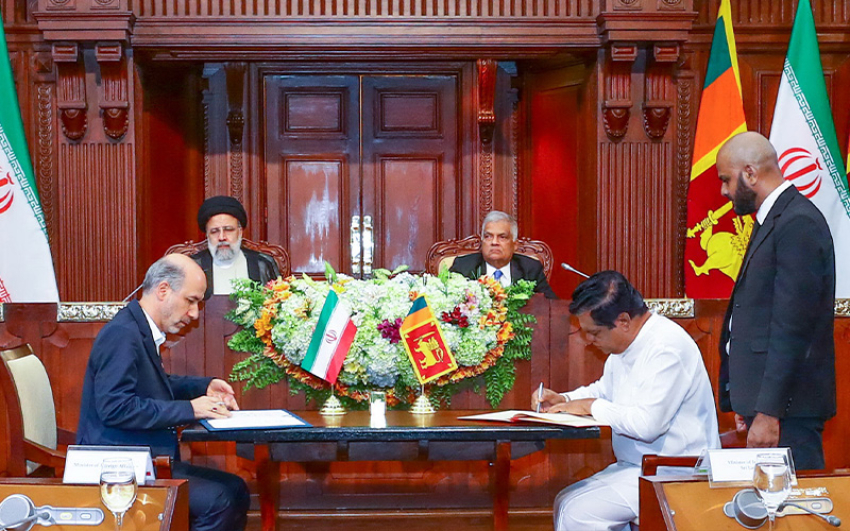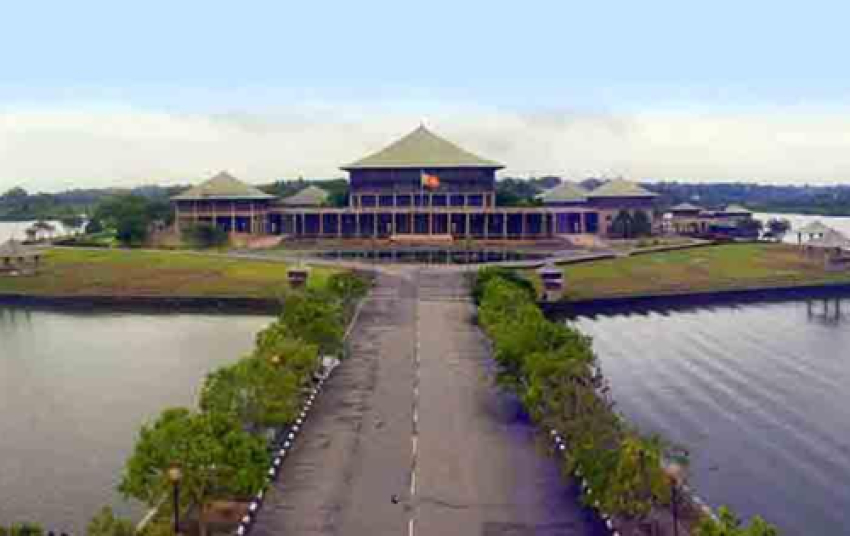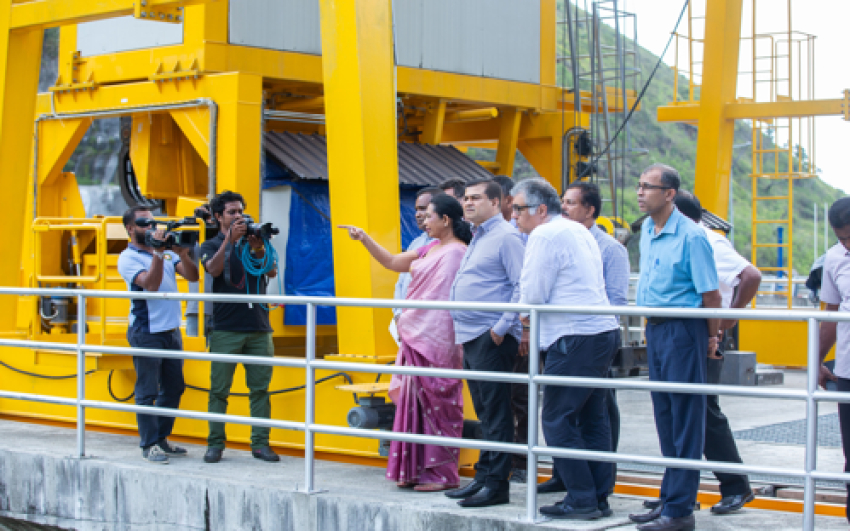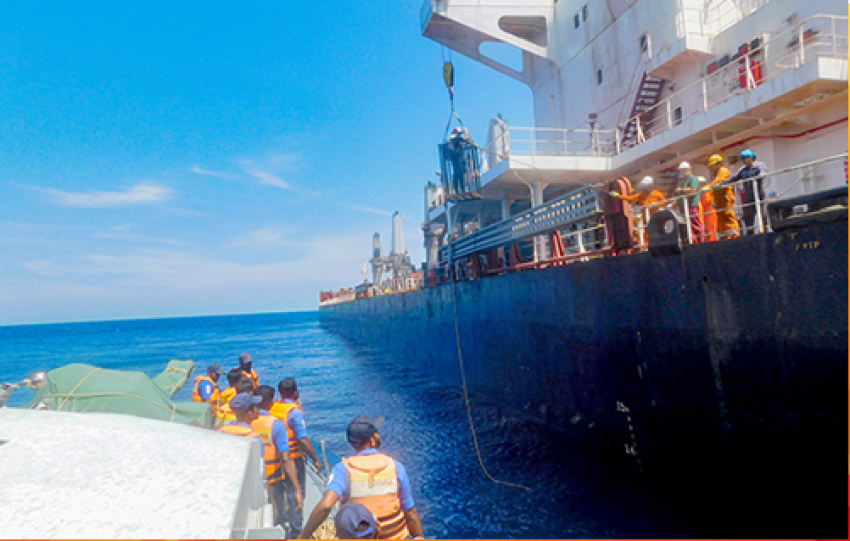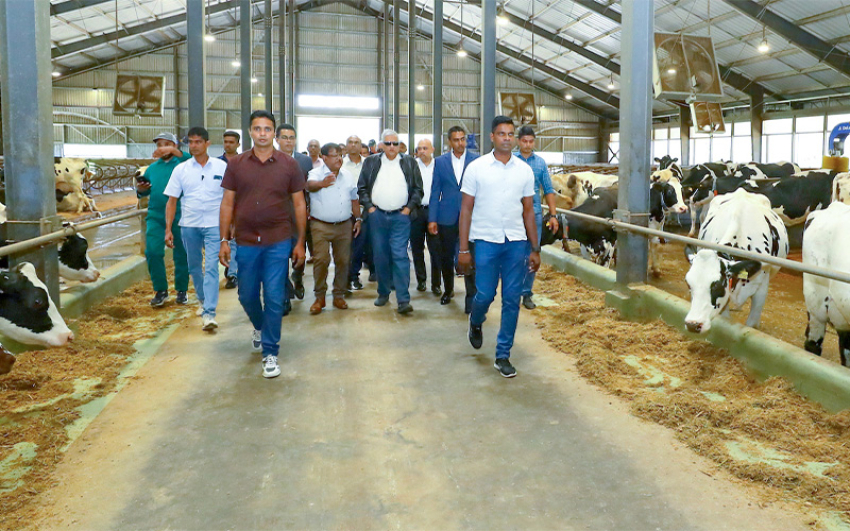Section 98 of the Code identifies several situations where an application could be made to a Magistrate's Court for relief. The jurisdiction of the Magistrate's Court under section 98 is limited to the prevention of public nuisances and that it does not extend to the suppression of private nuisances. In Sinna Gura v IP Karawanella, it was alleged by the informant that the respondent had a tree in his land which was likely to fall down and cause damage to the complainant. It was held that the powers of this section cannot be utilized in such an instance since the act complained of was a private nuisance in nature. Section 98(1) (a) of the Code refers to a place. In other words the section permits the court to make certain orders if the court is satisfied that any unlawful obstruction or nuisance should be removed from anyway, harbour, lake, river or channel which is or may be lawfully used by the public or from any public place.
The nuisance or the obstruction must take place either in a public place or in any category of places referred to in the section that is currently used by the public or which may be used by the public. The right of the public to use such place is a matter of evidence. Since the public element is the basis of Section 98 (1) (a), a court cannot make an order under this section if the place is not a public one or where there is no public element as regards the way, habour, lake, river or channel.
Section 98 (1) (b) provides for the situations where an order could be made regarding the continuance of any trade or occupation and keeping of any goods or merchandise. The main basis upon which orders could be made under this sub section is that the trade or occupation or the keeping of the goods or merchandise would be injurious to the health or physical discomfort to the community. The injury or discomfort to the community would be the main aspect for consideration in an application under this subsection. The term ‘community’ in this section cannot be given a restricted meaning specially in the context of the pollution that takes place in today’s society. Relatively smaller groups of people could get affected by the actions of others. In these circumstances it is best to give the widest possible interpretation to the term ‘community’ in this section.
Carder Saibo v Branha is another relevant case for consideration by all courts dealing with an application under this subsection. In this case it was held that in making an order under this subsection the Magistrate must specify the particular trade or occupation and the place that is carried on, and that it has been made to appear to the Magistrate Court that the trade is injurious to public health or comfort for causes stated. It must also be stated that applications under this subsection have increased specially in view of the several industries that have come up in recent times. Section 98 (1) (c) deals with the restriction of construction of any building or the disposal of any substance which is likely to result in conflagration or explosion. Section 98(1) (d) deals with dangerous buildings and trees while section 98(1) e refers to prevention of danger to the public from any unprotected tank, well or excavation.
Functions of the Magistrate's Court
Once the information is received by the Magistrate's Court, section 98 (1) requires the Magistrate to satisfy himself regarding the contents of the application. The Magistrate has discretion in deciding whether evidence should be obtained or not. Sometimes a Magistrate may opt to act on the affidavits filed by the complainant and proceed to make an order under section 98 without calling for evidence on the matter. On the other hand the Magistrate could also call for oral evidence before any order is made. The initial question that the court has to be satisfied is the question that the matter complained of amounts to a public nuisance. Once the court is satisfied regarding this aspect, it must then pay attention to the matters set out in the application to Court. Thereafter the Court must decide whether the obstruction should be removed or not. After hearing the complainants and their evidence wherever he deems such evidence necessary, the Magistrate could either refuse to issue a conditional order or if satisfied regarding the case of the complainant issue a conditional order as set out in section 98(1).
Once the conditional order is made in terms of section 99 of the Code it has to be served on the respondent Section 98 (2) states that any person on whom such an order has been served may appear before such court before the expiration of the time stated in that order and move to vacate the order or modify it. This section very clearly shows that the respondent has options available to him when the order is made. He could either comply with the order or act under section 98(2). This is confirmed in section 100 of the Code too.
Once the conditional order is served on the respondent and if he fails to comply with the same and also does not under section 98(2) and apply for the modification of the order or to set it aside, he becomes liable to face the penalty set out in section 185 of the Penal Code. A prosecution under this section can take place only with the sanction of the Attorney General or on the complaint of the public servant (See 4th Limb of section 19 of the Penal Code) concerned (section 135 of the Code). If the respondent appears on the nominated day or before, and moves to have the order set aside or modified, the Magistrate is required to take evidence in the matter (Section 101 of the Code). Until recently, there was some degree of confusion as to which party should commence leading the evidence. There were some instances where the judges called upon the complainant to lead evidence and in certain cases the respondent was asked to lead evidence. This confusion was resolved in a later case of Elal Jayantha v OIC Panadura.
Once the order is made absolute, the court would grant time to the respondent to perform any act that is contained in the order absolute. If he fails to do so he would face the same consequences as before (Penalty under section 100 of the Code). This order made under section 101 of the Code is required to be served on the respondent. Section 103 of the Code authorizes the court to have the order enforced by causing it to be performed. The cost of such enforcement can be recovered by the sale of any building, goods or other property removed by his order or by the distress or the sale of any movable property within or outside the jurisdiction of the Magistrates Court. If the property is outside the jurisdiction of the court making the order under section 101, the order shall authorize the attachment and sale of such property when endorsed by a Magistrate within the local limits of whose jurisdiction the property may be attached or found. As decided in Fernando v Cooray, orders made under section 101 are appealable.
Injunctions by the Magistrate's Court
The term ‘injunction’ is generally used in the context of civil litigation. An injunction is a restraining order issued by a court restraining the defendant in a civil case from the commission or continuance of a civil wrong. Section 54 of the Judicature Act outlines the jurisdiction to grant injunctions whilst section 662 - 666 of the Civil Procedure Code, sets out the procedure in granting injunctions. Hence the jurisdiction conferred on a Magistrate's court under section 104 of the Code is an extremely special one. This section empowers a Magistrate exercising power under section 98 of the Code to issue injunctions where the Magistrate considers that immediate measures should be taken to prevent imminent danger or injury of a serious kind to the public. If the person against whom such an injunction is issued does not obey the order, the Magistrate can make an appropriate order to obviate such danger or to prevent such an injury. Section 106 of the Code, empowers the Magistrate to issue absolute order at the commencement of a case.
This is done in extreme circumstances where the Magistrate is of the opinion that immediate prevention or speedy remedy is desirable. In such cases, the Magistrate may make a written order stating the facts of the case and directing the respondent to do or not to do certain acts as described in section 106. In terms of section 106(5) such an order will remain in force for a period of 14 days, unless in cases of danger to human life, health or safety or a likelihood of a riot or an affray, the Minister by notification in the Gazette otherwise directs.
Defences available to the respondent
The two chief defences to an action of nuisance are (1) statutory authority, and (2) prescription. As regards the former, a nuisance may be authorized by statute if the enterprise is in the public interest. Statutory authority will not however, protect an unavoidable nuisance. If a statute imposes any restriction it must be obeyed. If a nuisance is prohibited by law, it cannot be performed.
As regards defence of prescription, there are authorities which say that a right to commit a nuisance can never be acquired by prescription. The Following are some of the defences that may be urged by a respondent under section 101 of the Code of Criminal Procedure Act;
* That he believed in good faith that the place concerned is not a public place.
This defence can be raised in respect of situations falling under section 98 (1) (a).
* That the act complained of was an act authorized by law.
* That the nuisance complained was done in order to protect the defendant from an extraordinary danger.
* That in fact there is no public nuisance.
* That the respondent holds a valid environmental protection license issued by the CEA.
Apart from the above defences, it may also be pointed out by the respondent that the material submitted by the complainants is inadequate to hold that there is any violation. Moreover the Respondent could also raise objections of a technical nature, objecting to the admissibility of affidavits or the hearsay aspects of such affidavits if the affidavits do contain such material. In the case of Forest v Leefe, the respondent took up the position that he had conducted the business for a long period of time and pleaded such long period as a defence. This was rejected by the court which held that a person cannot by long continuance of his practice acquire a right to carry on business in such a way as to be a public nuisance.
Environment and Public Nuisance Actions
Prior to the enactment of the National Environmental Act of 1980 as amended, the provisions that dealt with the course of action available in the case of a pollution of the environment was contained in the Code of Criminal Procedure Act No.15 of 1979. Even though these provisions were not specifically identified as provisions relating to the protection of environment, they were made use of to curtail and restrict violations relating to environmental pollution. Even today these provisions are operational and are being used to complain to court about public nuisances.
In Jayawardene v Akmeenana Pradeshya Sabha it was held that the issue of a license does not have any legal recognition if the licensee continues to violate the conditions in the license. The essence of this judgement appears to be that a proceeding under section 98 of the Code could proceed even in an instance; the respondent is issued with a license under the National Environmental Act, if the licensee is found to have acted in breach of the conditions. In the earlier case of Marshal v Gunaratne Unnanse et.al it was stated that a permit under the Police Ordinance was no defence to a prosecution for public nuisance under the Penal Code.
The following key points should be borne in mind both by the Magistrate's court and the Counsel in public nuisance cases in their respective functions.
* An application to invoke the jurisdiction under section 98 of the Code of Criminal Procedure Act may be made either by way of private information or through the relevant authority or the police. It is relevant to note that the initial application to court must be carefully drafted.
* Counsel should take precautions to include all necessary materials to establish the nuisance. Details must be set out regarding the violation and the violator should be identified. Details of the nuisance and the impact must be set out with the supporting data and the necessary documents. All scientific data pertaining to the analysis of the extent of the nuisance must be presented to Court at the time the initial application is made.
* Generally the party affected by an act of a respondent would make police complaints and would possibly initiate action through the police. But there is nothing in the law that prevents the affected parties from filing information by them. In this situation it is advisable to obtain affidavits from all persons affected and to have them filed in court. Medical reports, scientific reports, police statements, affidavits are some of the documents that should be filed in such an instance.
* Once the information is received by the Court section 98 (1) requires the Magistrate to satisfy himself regarding the contents of the application. He has discretion in deciding whether evidence should be obtained or not. This is a matter that has to receive extra attention by all judges exercising jurisdiction under section 98. Sometimes a Magistrate may opt to act on the affidavits filed by the complainant and proceed to make an order under section 98 without calling for evidence on the matter. On the other hand the Magistrate could also call for oral evidence before any order is made.
* The initial question that the court has to be satisfied is the question that the matter complained of amounts to a public nuisance. Once the Court is satisfied regarding this aspect, the Court must then pay attention to the matters set out in the application to Court. Thereafter the Court must decide whether the obstruction should be removed or not.
* After hearing the complainants and their evidence wherever he deems such evidence necessary, the Magistrate could either refuse to issue a conditional order or if satisfied regarding the case of the complainant issue a conditional order as set out in section 98(1).
* In Jayawardene v Akmeenana Pradeshiya Sabha it was held that the issue of a license does not have any legal recognition if the licensee continues to violate the conditions in the licenses. The essence of this judgement appears to be that a proceeding under section 98 of the Code could proceed even in an instance; the respondent is issued with a license under the National Environmental Act, if the licensee is found to have acted in breach of the conditions.
* If the respondent appears on the nominated day or before and moves to have the order set aside or modified, the Magistrate under section 102 of the Code is required to take evidence in the matter. Until recently, there was some degree of confusion as to which party should commence leading the evidence. It was held in the case of Elal Jayantha v OIC Panadura, that the burden of leading evidence is with the respondent. If the respondent is unable to discharge this burden, the Court would make the earlier order absolute.
* Once the conditional order served on the respondent and if he fails to comply with the same and also does not act under section 98(2) and apply for the modification of the order or to set it aside, he becomes liable to face the penalty set out in section 185 of the Penal Code. A prosecution under this section can take place only with the sanction of the Attorney - General or on the complaint of the public servant (the 4th Limb of section 19 of the Penal Code), concerned
-
l

